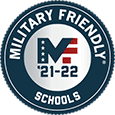A crane is just a crane, isn’t it? You see cranes on construction sites hoisting materials high in the air, swiveling and circling—seemingly with ease. If you look more closely, you’ll notice different types of construction cranes, and each style of construction site crane serves a specific purpose.
How long have cranes been around?
Cranes have been around since 515 B.C.E.—long before they were machine operated. The ancient Greeks used crane-like structures to build their temples and lifted tongs and iron. The first crane-like application was the winch and pulley that replaced ramps for moving materials vertically. Instead of engines powering these long arms of construction, men and donkeys powered the first cranes to help construct tall buildings. The addition of treadwheels later on allowed the ancient cranes to move heavier weights.
The Romans followed suit and developed a simple crane—trispatos—that had a single beam job, winch and a block with three pulleys. The main advantage of this engineering discovery was that humans could use trispatos without exerting a lot of effort. Roman cranes could lift better than Greek cranes, and they often used multiple cranes to build their temples and buildings.
By the Middle Ages, treadwheel cranes were used in Europe. Harbor cranes followed a few years later, helping with the construction of ships and their loading and unloading. The introduction of steam engines around the beginning of the 19th century—600 years later—changed the operational dynamics, replacing man- and donkey-powered cranes.
The modern crane construction machine built in the 20th century had a much higher lifting capacity than their predecessors, due to the internal combustion engines or electric motors with a hydraulic system that powered them.
What are common cranes used for in construction today?
Mobile cranes are popular for construction because they are mounted on crawlers or tires, which makes them easier to navigate around job sites. Some can even be driven on the highway.
- Crawler crane. Built on an undercarriage fitted with steel tracks rather than wheels, a crawler crane can be used on soft ground without sinking. Some have telescopic arms that enable them to change size—a plus because they are adaptable to various terrains. The disadvantages are with turning capacity and bulky appearance that necessitates special set up and transportation from site to site.
- Rough terrain crane. This crane is best used off-road and on rough terrain for picking and carrying operations. It’s similar to a crawler crane in that it can be fitted with telescopic booms, but unlike the crawler it has four tires and four-wheel drive.
- Floating crane. You may have seen one of these on an oil rig or in port. Used for projects at sea, a floating crane is also called a crane vessel or crane ship and have been used since the Middle Ages. The one thing that sets a floating crane apart from any other crane is its use at sea.
- Vehicle-mounted crane. This two-part crane has a carrier (truck) and boom (arm) and is mainly used for loading and moving equipment on a construction site. It’s also able to travel on the highway. Additionally, counterweights and outriggers help stabilize the vehicle so it can move slowly while carrying a large, heavy load.
- Railroad crane. Have you ever seen a crane gliding along railroad tracks? It would have been a railroad crane, used to construct, maintain and repair railway lines. Because it has flanged wheels, a railroad crane can only travel on railway tracks.
- Aerial crane. Also known as a “sky crane,” this is most often a helicopter that canny carry large loads, traveling to and lifting in areas that are difficult for regular cranes to reach.
Fixed cranes, used for the duration of a project, are often brought in and assembled on the construction site. Although they aren’t mobile, they are capable of handling heavier loads and reaching greater heights.
- Telescopic handler crane. The boom (or arm) on a telescopic crane has a hydraulic cylinder that enables it to change length, just like a telescope. Even though it’s considered a fixed crane, a telescopic handler crane may be mounted on a truck for transport between job sites. Its main advantage is its adaptability; the boom can collapse and compact itself, which is especially useful in short-term projects or rescue operations.
- Tower crane. Just as you would expect, a tower crane is capable of reaching tall heights. Its operating cab controls the entire crane, and the jib extends horizontally from the mast (the tower) that sits on a concrete base. These cranes are built to coincide with the building they’re servicing and are designed to grow taller as the building gets taller.
- Level-luffing crane. Used mainly for unloading and loading container ships, the level-luffing crane has a hinged jib that moves up and down with a hook that remains stationary. If they are used near ground level, it’s important to move the jibs carefully.
- Hammerhead crane. This fixed-jib crane consists of a horizontal double cantilever that sits on a steel-braced tower and revolves. It can weigh as much as 350 tons and is capable of lifting very heavy weights, such as battleship parts.
Having a crane at a construction site is important for moving heavy materials. Choosing the right crane for your project depends on the terrain, site size, weather, project length and weight of the materials being moved.

How can I Learn to Operate a Crane?
Because cranes are so big, expensive and potentially dangerous, it’s imperative to be properly trained. As a matter of fact, OSHA (Occupational Safety and Health Administration) requires special training and certification for crane operators. You’ll need to be compliant and should follow an inspection guide for mobile cranes and safety tips for crane lift.
The first step is enrolling in a heavy machinery operator school. Attending a school like Heavy Equipment Colleges of America can give you the hands-on training and the heavy machinery license employers across the country value. You can complete the first level of heavy equipment training in just three weeks. That could get you an entry-level position in earthmoving using the backhoe and front-end loader: digging, trenching and loading. By the time you finish, you should know construction site fundamentals, including blueprint reading.
To operate a crane, you’ll need to enroll in the 12-week mobile crane programs at Heavy Equipment Colleges of America. The Certificate of Heavy Equipment Operations – Mobile Crane gives you the fundamentals of crane operation and is a prerequisite for the next level: Certificate of Heavy Equipment Operations – Lattice Boom Crawler Crane training at HEC.
How can I learn to operate a crane?
How’s the job outlook for crane operators?
O*NET OnLine estimates job growth for heavy equipment operators to be faster than average for other professions. In 2018, the median wage was $23.55 an hour or $48,980 a year. The median wage in 2019 for crane operators was $27.26 an hour or $56,690 a year.
Contact HEC and start training to be a crane operator.




